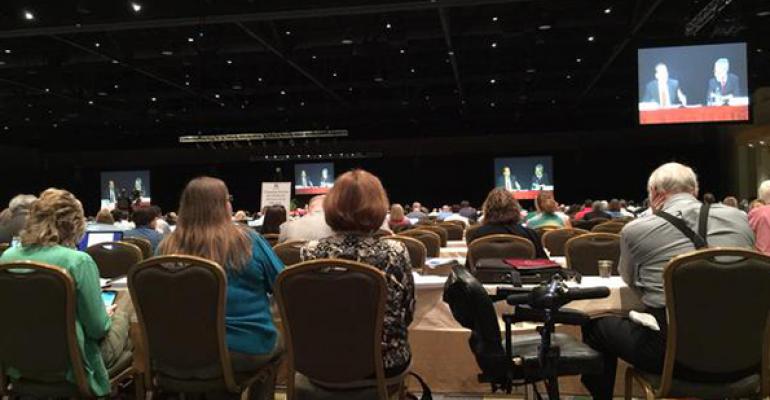Under the heading of income taxes, there’s is a significant open question concerning how a trust can materially participate in passive activities and thereby avoid the 3.8 percent surcharge on net investment income under Internal Revenue Code Section 1411. This question was discussed at the 49th Annual Heckerling Institute on Estate Planning. The Treasury and Internal Revenue Service are of the view that the issue of the application of the 3.8 percent tax to trusts and estates under IRC Section 1411 can’t be addressed except in the broader context of the passive loss rules of IRC Section 469. The issuance of guidance regarding material participation by trusts and estates for purposes of Section 469 appears on the 2014-2015 Treasury-IRS Priority Guidance Plan, but no regulatory guidance has been issued to date. In the interim, taxpayers, the IRS and the courts have grappled with determining what constitutes material participation by a trust in a passive activity.
Against this backdrop of the current regulatory vacuum we have the Tax Court’s decision in Frank Aragona Trust v. Commissioner.1 In Aragona, the trust operated its rental real estate activity primarily through a wholly-owned limited liability company. The trust’s other real estate activities were conducted through several separate entities, some wholly owned and others in which the trust owned a majority interest. The trust had six trustees – three of whom were employees of the rental real estate business owned in part by the trust.
The IRS’ position in this case was that, for purposes of the passive loss rules of Section 469, a trust only participates when the trustee materially participates in the activity, and no attribution of participation to the trustee should be allowed when the trustee wears another fiduciary hat as well.
The principal issues before the Tax Court were: (1) whether the trust could qualify for treatment as a “real estate professional” and deduct rental real estate losses, and (2) whether the trust materially participated in the real estate business through the activities of its trustees and/or employees. The taxpayer ultimately prevailed on both issues, with the Tax Court holding that a trust could qualify for the real estate professional exception and that the trust had materially participated through the actions of its trustees. Importantly, however, the Tax Court declined to rule on the issue that had been previously decided in favor of the taxpayer in Mattie K. Carter Trust v. United States,2– namely, whether the activities of the trust’s non-trustee employees should be disregarded for this purpose. Rather, the court held that the direct actions of the trustees were sufficient to carry the day in this case.
The Tax Court’s analysis in Aragona was very fact-intensive focusing, among other things, on the trustees’ involvement in managing the day-to-day operations of the trust’s various real estate businesses. It, therefore, highlights the importance of documenting a trustee’s day-to-day involvement in real estate activities to help ward off IRS challenges to the trustee’s material participation for purposes of both Sections 469 and 1411.
Endnotes
- Frank Aragona Trust v. Commissioner, 142 T.C. No. 9 (2014).
- Mattie K. Carter Trust v. United States, 256 F. Supp. 2d 536 (N.D. Tex. 2003).





